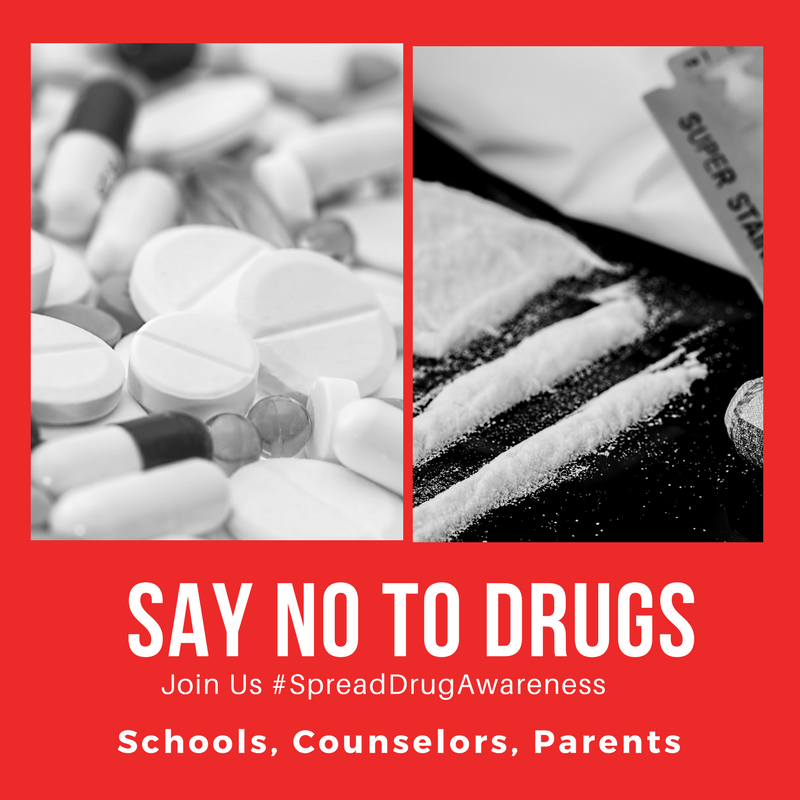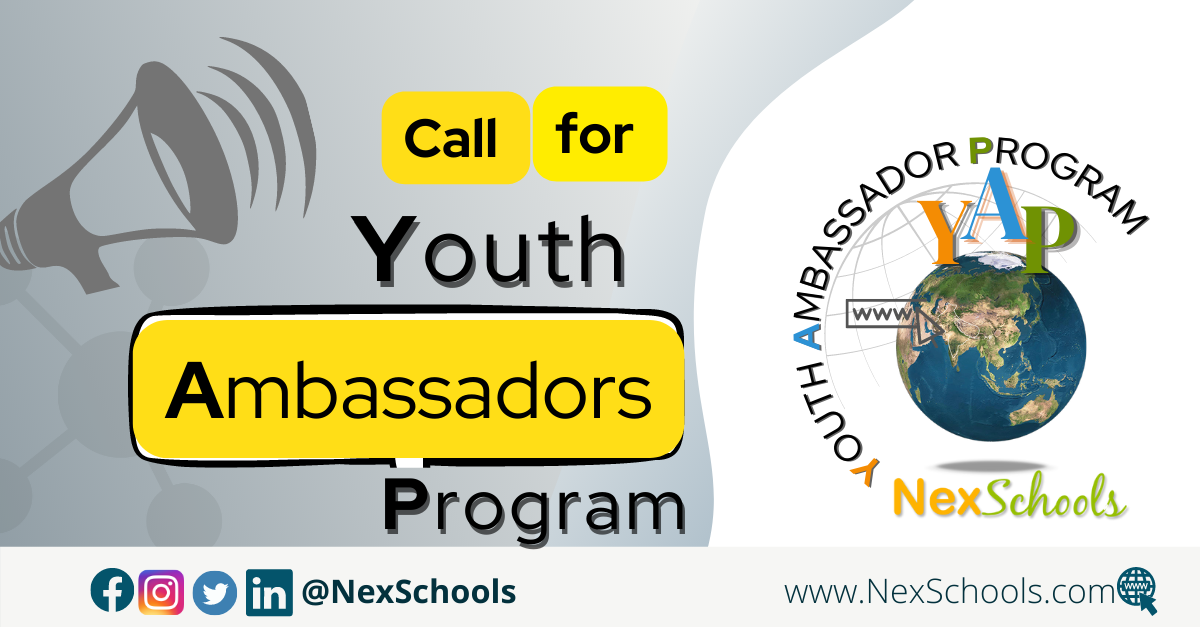 What is drug abuse? Why has it become relevant to talk and discuss it?
What is drug abuse? Why has it become relevant to talk and discuss it?
We have been experiencing an alarming increase in drug abuse among youngsters and teenagers in the recent years. The recent reports by the newspapers and media make it imperative to draw attention towards the alarming rise in drug abuse among the youth. The schools, parents and society as a whole are in a denial to comprehend it as a medical condition which can be treated like any other chronic diseases like asthma or diabetes. There is an urgent need to work towards awareness program by schools, parents, and society at large to prevent it to spread and identify it at an early stage.
The drug addiction among the schoolchildren is grappling the country at a very fast pace. A survey by NGO shows that 63.1% patients coming for treatment for drug abuse were introduced at a young age below 15 years. (Source: Child Line India Foundation).
What is Drug Abuse and Addiction?
The extreme desire to obtain, consume, use one or more substance in increased amounts is drug abuse. Drug addiction is compulsive drug seeking and use, despite knowing harmful consequence in most cases. Drug abuse is a brain disease, which leads to changes in structure and function of the brain.

What leads to drug addiction?
Anyone can fall victim to drug abuse and addiction. The fun, curiosity and desire for pleasure, peer pressure are some factors that are playing the significant role in today’s rise in drug abuse victims. First time experiments in the party for high, youth influenced by films and easy availability makes the children as young as 14 years and below to take the drug for the first time.
The other high-risk factors are:
-
Socio-economic condition
-
Childhood behavioral problems
-
Peer group pressures
-
Family conflict
-
Transition stages- moving from elementary to middle school, school to college bring new and challenging social and academic situations.
The personal characteristics that positively correlated with drug abuse are numerous and include:
-
High levels of family conflict
-
Inconsistent parental discipline
-
History of anti-social and aggressive behavior
-
Academic failure
-
Lack of self-confidence
-
Excessive stress
-
Lack of parental involvement in child’s activities
The availability of drugs in community, school or home. The law and norms that support lower minimum drinking ages and availability.
Why adolescence and teen drug addiction is more harmful?
Although taking drugs at any stage of life can lead to drug addiction, earlier the drug addiction begins the chances are it is more likely to become serious drug addiction challenge. In adolescence, the brain is still developing into areas that govern decision-making, judgment and self-control, they are more prone to risk-taking behaviors including trying more powerful drugs of abuse.
The use of drugs at an early stage also disrupts brain function in areas critical to motivation, memory learning and may result in non-assessment of risks factors involved in using drugs. So is not surprising that children with drug abuse and alcohol have social and family problems, poor academic performance, health-related problems.

Understand the factors that contribute to Adolescence and Teen Drug Abuse
The transition period in one's life is full of new challenges and situations this is a period of high risk for experimenting with drug use due to numerous social and environmental factors. A teens and adolescence life is no different let us figure out what goes into this development stage.
-
Elementary school to middle school transition brings new situations, social challenges, and academic advancements. Often during this period, children are exposed to different kinds of drugs.
-
When teens enter high schools, Junior colleges, or colleges, there is more freedom, they are exposed to a different kind of environment, and also children from different backgrounds come together. The peer influences thus play a big role in trying drugs for the first time. Before they know the youth are trapped in the addiction and it becomes late for prevention.
-
The normal behavior of this development stage is the desire to try new things or take greater risks may increase teen tendencies to try drugs for the first time.
-
Some teens may give in to the urging of drug-using friends to share the experience with them.
-
Other misconceptions amongst teenagers thinking that drugs(such as steroids) will improve their appearance or their athletic performance or that abusing substance may ease their anxiety for in social situations.
-
Teens’ still developing judgment and decision-making skills may limit their ability to accurately assess the risks of all these forms of drug use.
Prevention & Solution
“Never experiment in the first place for fun, kick & curiosity”.
As a young person, there are enough challenges in our children’s life nowadays. The teens and children who don’t use drugs are less likely to use them as adults so why not prevent early use of drugs. If we can prevent young people from experimenting with drugs, we can prevent them from drug addiction.
“Education, encouragement and good family bond, besides more awareness programs by schools and society at large will make way for our children to SAY NO TO DRUGS”- Founder NexSchools
The prevention programs can be conducted for the three clearly identified different groups:
-
Universal Programs address risk and protective factors common for all children. It can be conducted in schools or community.
-
Selective Programs target group of children and teens who are in a setting or age group that put them at higher risk of drug use.
-
Indicated programs are designed for youth and children who have already begun using drugs.
After identifying the target group, research-based scientific programs must be conducted in schools, communities and families.
These programs help schools, parents, and healthcare professionals shape the perceptions of the youth about the drug abuse risks. When youth have knowledge and wisdom to judge the harmful effects of drug abuse they are less likely to use it.
It is emphasised in NIDA 2010 Report that both the role of family and community prevention programmes as a vital to deterring teen and adolescent substance abuse.
Family Prevention Program
Strengthening family bonding and using appropriate discipline can help in eliminating risk factors for the use of drug abuse.
Community and School Prevention Programmes
Introducing prevention programmes at an early age from preschool-first grade to address risk factors for later substance abuse. It can prevent also prevent many behavior problems in the children later on such as early aggression, poor social skills and academic difficulty.
The programmes also include goals to increase performance, awareness about harmful effects of drugs use and learning to manage mood and emotions.
The schools also benefit from programmes leads to improved school overall performance, positive attitude of students in problem solving, high self-esteem etc.
It has been witnessed lack of knowledge, skills, resources and screening tools all add to barriers to preventive services. The pediatricians and primary health care providers can also play a vital role in identifying the problem and subsequently in treatment.

The abuse of alcohol and rugs has resulted in increased number of morbidity and mortality among adolescents worldwide. It is time for India to accept the drug use as a challenge and work towards the prevention and eliminating it. Although drug abuse problem is complex and large in magnitude but research based studies by National Institute of Drug Use (NIDA) in the USA and other countries have shown a significant decrease in the use with effective and timely prevention and intervention methods. The strategy of targeting modifiable risk factors, enhancing protective factors through families, schools and community prevention programmes.
Join hands with NexSchools to bring awareness, risk factors, signs, causes, effects, abuse, withdrawal, treatment and more. Help children in your life say NO TO DRUGS and avoid drug addiction.
We invite you to share your stories, solutions in spreading the guiding light to be drug-free schools, communities. Please contact us for any questions about drug prevention, programs for the schools and parents.